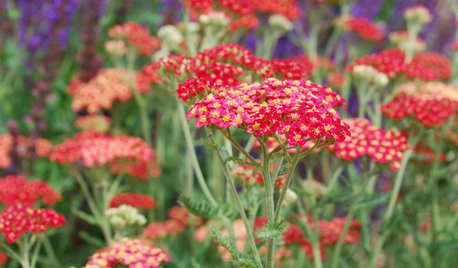How to Prepare: Turnips
gardenmom2
15 years ago
Related Stories

GARDENING GUIDESSouthern California Gardener's September Checklist
Before prime planting time, clean out the old garden, prepare for the new, and dream up ideas for fall flowers and veggies
Full Story0

GARDENING GUIDES11 Favorite Edibles for Your Cool-Season Garden
Plant crunchy carrots, crisp radishes, tender peas and other vegetables for fall and spring harvests
Full Story
GARDENING GUIDESTexas Gardener's February Checklist
Show roses some love around Valentine's Day and set the stage for future garden growth with seeds and starts
Full Story
GARDENING AND LANDSCAPINGGarden Musts for April
There's plenty to do in your garden this month without mucking around in the mud. Think seeds and let the rain do its work
Full Story
GARDENING GUIDESLush, Foodie Abundance in a Small Urban Garden
This modest backyard garden provides its owner with fruit and vegetables all year round, thanks to an innovative low-maintenance approach
Full Story
GARDENING GUIDES10 Easy Edibles for First-Time Gardeners
Focus on these beginner-friendly vegetables, herbs, beans and salad greens to start a home farm with little fuss
Full Story
EDIBLE GARDENSHow to Grow Your Own Sweet Summer Crops
This guide will help any gardener get started on growing the freshest warm-season veggies and berries for summer
Full Story
HOUZZ TOURSHouzz Tour: Undone in the French Quarter
Color and history abound in this ‘unrenovated’ pied-à-terre in the Big Easy
Full Story
LIFETo-Dos: Your October Home Checklist
It’s a great time to clean your gutters, swap out seasonal clothes and wallow in favorite fall traditions. What’s on your October list?
Full Story
GARDENING AND LANDSCAPINGWorld of Design: 10 Home Gardeners Show Us Their Sweet Summer Harvests
From New York to Tokyo, these gardeners have turned their yards, terraces and rooftops into places of bounty
Full Story





jaleeisa
Chemocurl zn5b/6a Indiana
Related Professionals
Belmont Landscape Contractors · Cliffside Park Landscape Contractors · Fuquay-Varina Landscape Contractors · La Vista Landscape Contractors · Pleasant Prairie Landscape Contractors · Austin Roofing & Gutters · Birmingham Carpenters · Lisle Carpenters · North Lauderdale Carpenters · Oak Forest Carpenters · Salisbury Carpenters · Sandusky Carpenters · Knoxville Decks, Patios & Outdoor Enclosures · Morgan Hill Decks, Patios & Outdoor Enclosures · Woodstock Decks, Patios & Outdoor Enclosuresgardenmom2Original Author
jaleeisa
gardenmom2Original Author
jaleeisa
gardenmom2Original Author
jaleeisa
jaynine
Chemocurl zn5b/6a Indiana
gardenmom2Original Author
Chemocurl zn5b/6a Indiana
gardenmom2Original Author
grovespirit
grovespirit